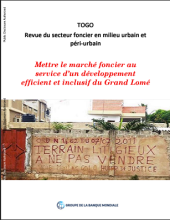Land Library Search
Through our robust search engine, you can search for any item of the over 73,000 highly curated resources in the Land Library.
If you would like to find an overview of what is possible, feel free to peruse the Search Guide.
/ library resources
Showing items 1 through 9 of 42.Le Togo a connu une forte croissance économique dont la poursuite devra être soutenue par l’amélioration du secteur foncier. La croissance économique de plus de 5% annuellement depuis 2009 est parmi les meilleurs du continent.
Globally, farmland abandonment has been a major phenomenon for eco-environmental and social landscape changes in the mountain regions.
In January 2019, Uzbekistan started a new farm restructuring1. It is said to seek to optimize the use of farmland by increasing the size of farms producing wheat and cotton, reallocating land to more efficient farmers and even clusters, and improving crop rotation options.
In economics, land has been traditionally assumed to be a fixed production factor, both in terms of quantity supplied and mobility, as opposed to capital and labor, which are usually considered to be mobile factors, at least to some extent.
As the applications of Earth system models (ESMs) move from general climate projections toward questions of mitigation and adaptation, the inclusion of land management practices in these models becomes crucial.
Agricultural GDP in Ethiopia grew at an average 7.3 percent per year between 2001/02 and 2012/13.
The current state of agricultural production space is the outcome of centuries of human activity, as conditioned by socio-economic, legal, and political factors.









